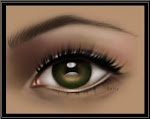
عدسات إلكترونية ستسبق الصورة إلى عينيك قبل أن تراها 8/7/2008
إرتدى بارباك بارفيز عدسات الإتصال في معمله والتي أحتوت على دارة إلكترونية والتي ظهرت وكأنها قطعة من عالم الخيال العلمي ,وسيقوم الأن بإضافة صمامات ضوئية متناهية الصغر تسمى (LEDs),والتي ستساعد على تحويل الطراز الأول من عدسات الإتصال إلى عدسات أكثر تعقيد تعرض أدق الأشياء التي يحتمل رؤيتها .
يعكف البرفسور بارفيز حاليًا على ما يسمى بالتجميع الذاتي أو تقنية النانو الحيوية أو إبتكار النانو والنظام الميكانيكي الإلكتروني المتناهي الصغر، فقد قام بإختراع جهاز إلكتروني متناهي الصغر واستخدم فيه تقنية النانو وتقنية إعادة التجميع المتناهية الصغر، ومن ثم قام بعملية تكامل لها إلى قطعة بوليمر أو زجاج في عملية تسمى بالتجميع الذاتي.
كيف فكر البرفسور بإختراع عدسة إتصال تحمل انظمة الكترونية دقيقة تحاكي وظائف الكائنات الحية ؟ تخيل شخصًا بمثل هذه الأمكانيات والأبحاث والخلفية الخارقة "وأضاف"تخيل ايضًا الشخص نفسه وقد استيقظ من النوم وارتدى هذا النوع من العدسات الإلكترونية.
التطلع للمستقبل
قال البرفسور بارباك بارفيز إن إختراع مثل هذا النوع من العدسات ليس بالمهمة الشاقة فهو يفكر في طريقة عرض غير تقليدية, لعدسات إتصال مصنوعة من البوليمرات الشفافة المرنة.
وكنوع من التحدي فإن بارباك يتطلع لتركيب الشرائح الإلكترونية على قطعة البوليمر هذه والحكمة هنا كما قال بارباك ليست جعل الشيء صغيرًا وإنما لجعلة مرغوبًا وسهل الإستخدام فوجود شاشة عرض في عدسة الإتصال سيسهل عملية الإستخدام.
وعزا السبب إلى أن السبب كون أحجام أجهزة الحاسب المحمول والهاتف المحمول ليست صغيرة يعود إلى شاشة العرض فلو نقلنا شاشات العرض إلى عدسة الإتصال فبإمكاننا في هذه الحالة الإستغناء عن حجم الأجهزة الكبير.
وإلى الآن اظهر البرفسور اداء عالي لشرائح الإلكترونية والصمامات المتناهية الصغر ويعود الفضل لشفافيتها وحجمها الصغير ومرونتها.
وتتكون الشرائح الإلكترونية من طبقات معدينة أقل كثافة مرتبطة بالصمامات وتعتمد تقنية إعادة التجميع المتناهية الصغر والمعروفة بالتجميع الذاتي على تأثير الأنانبيب الشعرية الدقيقة في عملية ربطها ببعضها البعض لتعطي في النهاية الشكل المبدئي لشرائح الإلكترونية .
وأكد البرفسور بارفيز أن ما تحتاج إليه الشرائح اليوم الطاقة لدعمها والخطوة الرئيسة هنا التطلع لطرق مختلفة لتمرير الطاقة والطريقة المقترحة الأولى هي نقل ذبذبات الطاقة الإشعاعية ونحتاج هنا إلى هوائي لنقل البيانات إلى عدسة الإتصال والطريقة الثانية والتي نتطلع إليها بجد دمج الخلايا الشمسية ".
وأضاف" لا تعد الطاقة مشكلة صعبة التنفيذ فعدسة الإتصال تثبت مباشرة على سطح العين قريبة جدًا من عدسة العين لتركيز عليها ولإبتكار صورة مركزة يجب علينا معالجة اشعة الضوء ويمكننا ذلك إذا استخدمنا الليزر عوضًا عن الصمامات الضوئية المتناهية في الصغر إلا أن التقنية الأخيرة الأكثر سلامة في الإستخدام ".
يفكر البرفسور في إحتمال الدمج صفوف من العدسات الفردية متناهية الصغر إلى عدسة الإتصال وافاد بأن لو كان حجم الصورة قريب جدا لحجم العدسة المتناهية الصغر فإنها ستعطي صورة حيوية بحجم 30 سم بعيدة عن السطح.
والتساؤل الأهم هنا ما إذا كانت هذه التقنية مؤذية للعين ؟ لأنها بذلك ستفتح افق اوسع للإتصال الوظيفي اللاسلكي في عدسات الإتصال هذه والتي سيكون لها استخدامات متعددة مستقبلاً.
ومع فكرة إنطلاق هذا الإختراع تلقى البرفسور بارفيز الكثير من الرسائل البريدية من أشخاص من أنحاء مختلفة من العالم , يتسالون حول عمل هذه التقنية بالأخص من قبل الأشخاص الذين يعانون من ضعف الإبصار في ما إذا كانت ستفتح لهم هذه التقنية افق جديد .
واقترح أحد الطلبة أن تخدم هذه التقنية الأشخاص ذو الإعاقات السمعية في التنبة للأشياء التي تتطلب الرؤية والإستماع في نفس الوقت ,كجرس الإنذار عن الحرائق مثلاً ,والذي سيلفت نظر ضعاف السمع إليه حال حدوث حريق.
لم يكن البرفسور جيمس ولفسون متحمسًا كثيرًا لفكرة البرفسور بارفيز لأسباب عديد ومنها أن عرض هذه العدسة سيكون 24 ملم تقريبًا مقارنة بقطر العين الذي يتراوح ما بين 4-5 ملم ,فبذلك لن تترك هذه العدسة مساحة من دون أن تعيق الرؤية وسيكون من الصعب تسليط الصورة من المحيط إلى مركز العين .
" منقول"

